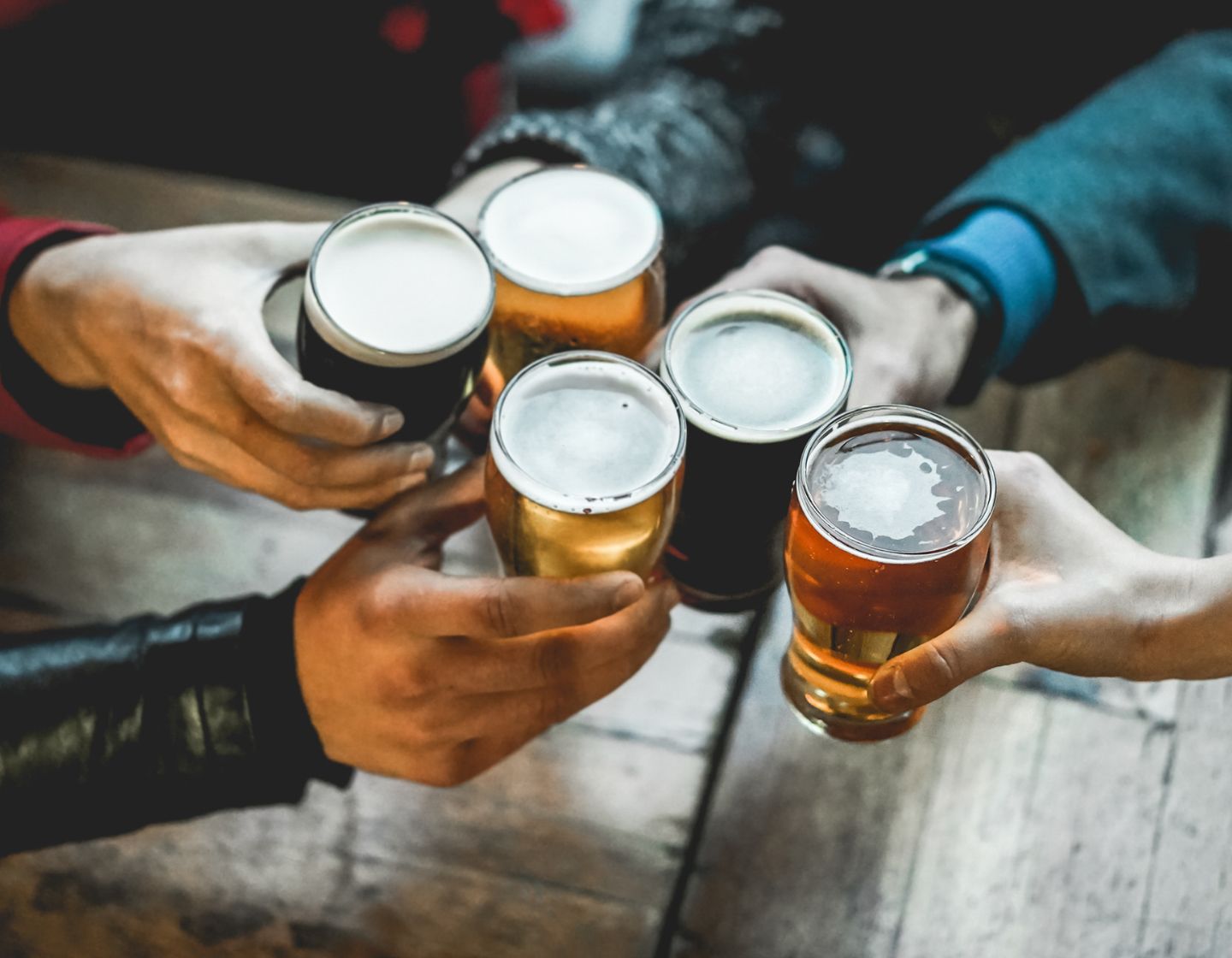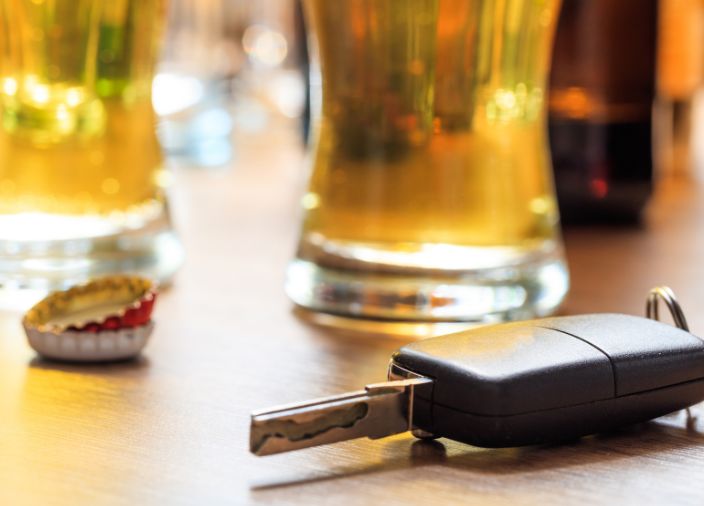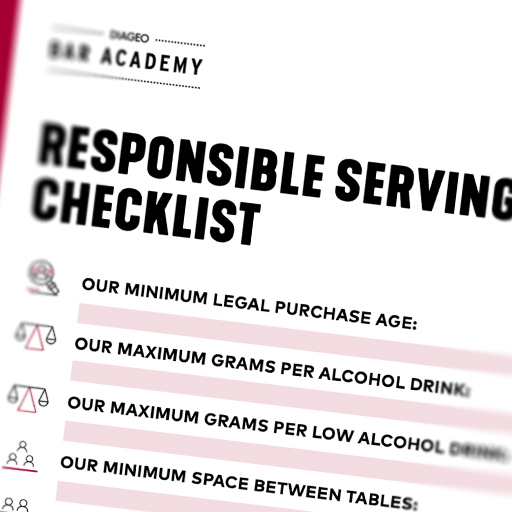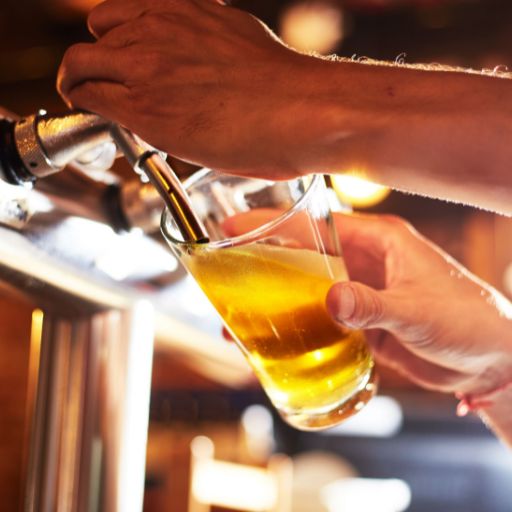
RESPONSIBLE CONSUMPTION OF ALCOHOL
As a bar professional, it’s especially important to be alcohol aware. Learn about responsible alcohol consumption and how it can have an impact on health, safety, and social well-being.
Estimated Reading Time: 6 Minutes
Responsible consumption of alcohol involves making informed choices and being mindful of the impact of alcohol on your health, safety, and social well-being.
In this article we delve into what alcohol is, how it affects your body, and tips on how to drink responsibly.
WHAT IS ALCOHOL?
Ethyl Alcohol, simply known as ethanol is the type of alcohol that is found in alcoholic beverages (like beer, wine, and spirits). Ethanol is a clear, colorless liquid with a slightly sweet smell and taste.
WHAT IS % ABV?
Different drinks have different concentrations of alcohol, and this is generally expressed as the percentage of alcohol by volume or ABV. For example, if a spirit is 40% ABV, 40% of its content is ethanol and the remainder 60% will mostly be water.
Spirits: Have the highest concentration of alcohol and most contain around 40% ABV. However, alcoholic strength can vary considerably, from 35% ABV to 80% ABV.
Liqueurs: Are also spirits based, generally contain less alcohol and their ABV may be below 20% to 45% ABV.
Wine: Generally, contains between 9 to 15% ABV. However, some wines can have a slightly higher alcohol content. Fortified wines like port or sherry are usually around 20% ABV because some spirits have been added to them.
Beer: Most regular beer ranges between 4% and 10% ABV.
Low and no: Most low and no drinks will have a very small amount of alcohol in them and are usually 0.05% ABV or less.
Alcohol Units & Guidelines

Alcohol Units & Guidelines
A unit is a measure of the alcohol in your drink. It’s the same for beer, wine, and spirits, and is expressed as grams of pure ethanol, or volume of pure ethanol.
In the UK, a unit contains 8 grams or 10 milliliters of pure ethanol.
The purpose of a unit is to provide consistency across beverage types and help translate the science behind drinking and health into something easily understood. This is important for providing drinking guidelines and advice.
The UK Chief Medical Officer’s guideline for both men and women is to drink no more than 14 units a week on a regular basis, to minimize any health risks from alcohol. Men should consume no more than two standard drinks a day, and women, no more than one. A standard alcoholic drink is defined as a can (330 ml) of regular beer at 4.6% ABV, half a glass (100 ml) of wine at 12% ABV, or 1 serving (30 ml) of spirit at 40% ABV.
Not all countries use the same unit size as the UK. Nevertheless, in each case, the same measure applies whether you’re drinking beer, wine or spirits. Some markets, like the USA and Singapore, also refer to a ‘standard drink’ rather than a ‘unit’.
For example:
A standard unit in the UK contains 8 grams of ethanol
In Australia and France, the standard is 10 grams
A Mexican standard drink contains 13 grams*
There are 14 grams of ethanol in a standard drink in the US, Argentina, and Chile*
*Note: if the standard drink size is more than 10 grams of ethanol, than the recommended unit per day/week will need to be reduced accordingly.
A unit doesn’t always translate into how drinks are actually served. For example, many cocktails contain several different spirits or are mixed with other alcoholic ingredients, so they’ll most likely contain more alcohol than in a standard unit. Also, since all spirits, wines and beers come in different strengths, and serve sizes, the amount of alcohol you drink will not be standard.
HOW DOES THE BODY PROCESS ALCOHOL?
When alcohol is consumed, the human body undergoes a series of processes to metabolize and eliminate it. How quickly this happens can be different for everyone, so it’s important to take your personal circumstances into account.
The process in your body:
The body starts to break down the alcohol immediately, starting in the mouth, and then in the digestive system.
As alcohol enters the stomach and small intestine, some of the alcohol will be absorbed into the bloodstream and circulated through the body.
The alcohol will also reach the brain, where the intoxicating effects take place.
Alcohol metabolism primarily occurs in the liver.
It takes the liver roughly one hour to break down one standard unit of alcohol, but this speed is slightly different for each person. There’s nothing you can do to speed up this process.
Any additional alcohol consumed during the hour will remain in the blood and cross into the brain, causing intoxication.
EFFECTS OF ALCOHOL CONSUMPTION
The effect of drinking is likely to be felt within a few minutes of consuming alcohol. How quickly this happens depends on factors including weight, gender, age, and general health. Generally, it can take longer for larger people to feel the effects of drinking than smaller people.

Short-term effects:
Intoxication will impair reaction time and judgment, which can lead to injuries.
Too much alcohol may also leave you nauseous and vomiting, or dehydrated, and suffering memory loss with a hangover the next day.
If drinking has been extreme, a person could even end up in hospital with alcohol poisoning.
It is also more likely for an intoxicated person to engage in potentially risky behavior.
Long-term effects:
Many studies have shown that people who drink heavily on a regular basis are likely to develop various illnesses over time, including liver disease, high blood pressure, heart disease, and some types of cancer.
It can also affect mental and emotional health.

TIPS FOR RESPONSIBLE DRINKING
Staying safe when drinking involves responsible consumption, making informed decisions, and prioritising your well-being and the well-being of others. Here are some useful tips to help you stay safe when drinking:
Nominate a (non-drinking) designated driver
Eat before and during drinking
Set a limit to how much you will drink
Opt for low or no alcohol drinks
Alternate between alcohol and water
Pace your drinking (to one standard drink per hour)
Do not mix medication with alcohol
Do not top up your drinks halfway so you can keep track of consumption
Important note: Be familiar with and abide by the legal drinking age in your country or region. The legal drinking age was established to protect the health and safety of young people.
Put your knowledge to the test and take the responsible consumption alcohol quiz.
Related Content

Responsible Serving Checklist
Make sure your team are up to date on responsible service in your venue with this handy checklist.
Practice Responsible Serving Like a Pro
Creating a fun, vibrant yet safe space for guests should be top of every bar’s agenda. Learn how to spot the signs of intoxication and promote responsible serving in your bar.
